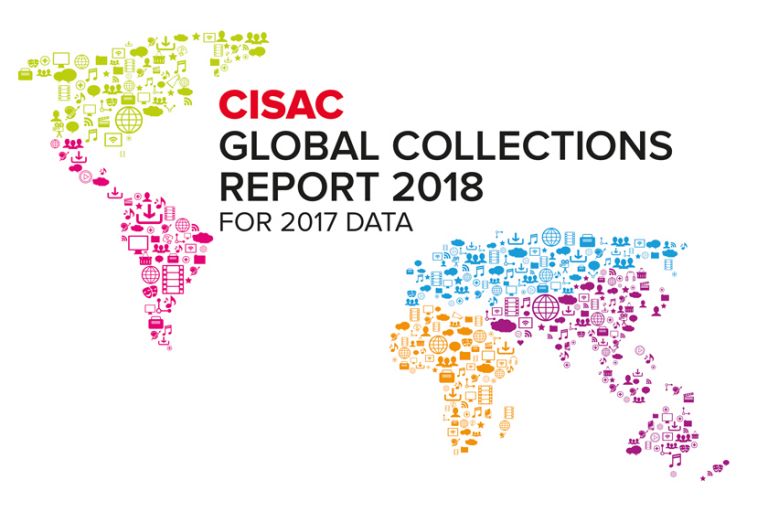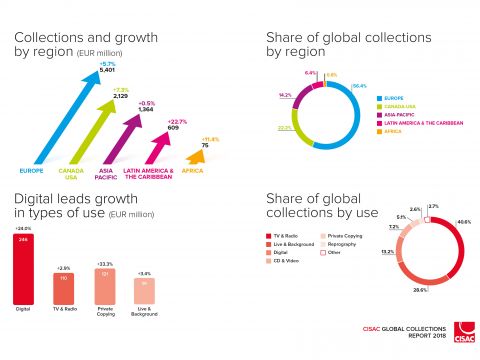Royalities for audiovisual authors – a drop in the ocean

Last week, the International Confederation of Societies of Authors and Composers (CISAC) presented its annual Global Collections Report. Out of royalties collected for audiovisual, dramatic, literature, music and visual authors, audiovisual authors get a mere 6,4%, compared to music that represent 87% of global collections.
While collective rights management for music creators has since long been a tradition, these figures demonstrate that the rights of directors and screenwriters have not yet caught up. There is room for improvement for the collections across all creative sectors, but the discrepancy between royalties’ collection for audiovisual authors and the actual distribution and consumption of film and TV is staggering: 6,4% is a drop in the ocean.
According to the CISAC report, TV continues to be the first source of audiovisual authors’ collections accounting for over 70%, and France is the country in Europe that collects the most: 45.1% of all TV and radio collections for the audiovisual repertoire came from France, followed by Switzerland representing 12.8%, Italy 8.0%, Poland 4.7% and Spain 4.7%. Collections from private copying were led by Germany (35.2%), which recorded the highest growth thanks to a back payment of several years of levies on smartphones, tablets and PCs. Digital collections for the repertoire grew by 122% in 2017 and over twelvefold since 2013 - but still only represent 2.4% of the collections for audiovisual authors. Five European countries collect digital rights for audiovisual authors, with France (83.4%), Italy (11.4%) and Spain (4.8%) totalling a little over EUR14m.
Audiovisual authors worldwide are in a weak bargaining position as their contracts are signed at a time when the value of their work is unknown. Consequently, they often do not receive a share in the revenues derived from the success of their films, especially not when available on platforms such as Netflix and Amazon. The 14 million euros of royalty collections for the on-demand exploitation of audiovisual works is to compare with Netflix total revenue of 11.69 billion US dollars in 2017 and the 100 million hours Europeans consume online every day.
In order for royalty collection figures to better represent the exploitation of creators’ work, there has to be a principle of fair and proportionate remuneration enshrined in law. The European Union is currently negotiating its new Directive on Copyright in the Digital Single Market and the European Parliament together with creative stakeholders, authors and supporters call for such a principle of fair and proportionate remuneration for the exploitation of authors’ works to be introduced in European law. 19 out of 28 EU Member States prove that it is possible as they already have successfully implemented various forms of remuneration mechanisms. A recent international legal study commissioned by CISAC and Writers & Directors Worldwide also concludes that a legal right to remuneration is the way forward.
I am convinced that by time, when the new EU Copyright Directive will be in place, we will be able to see a significant increase of royalty collections for audiovisual authors when looking at the next editions of the CISAC Global Collections Reports.

